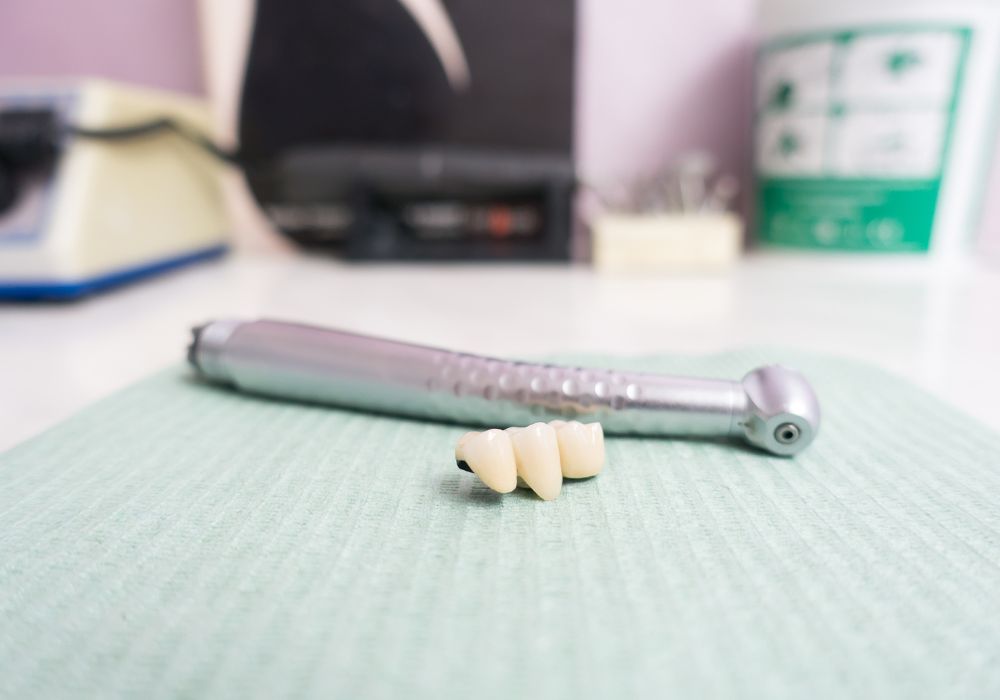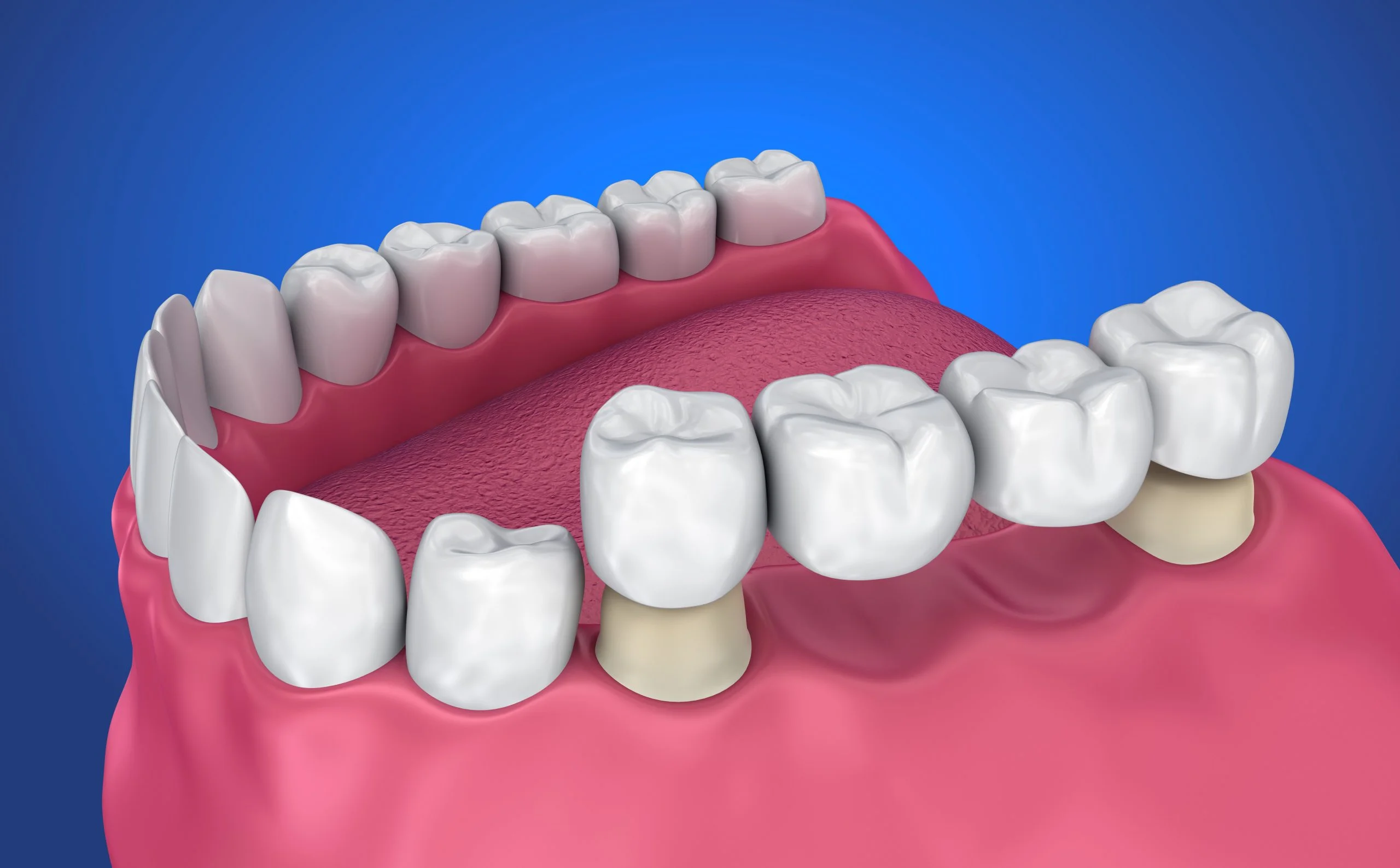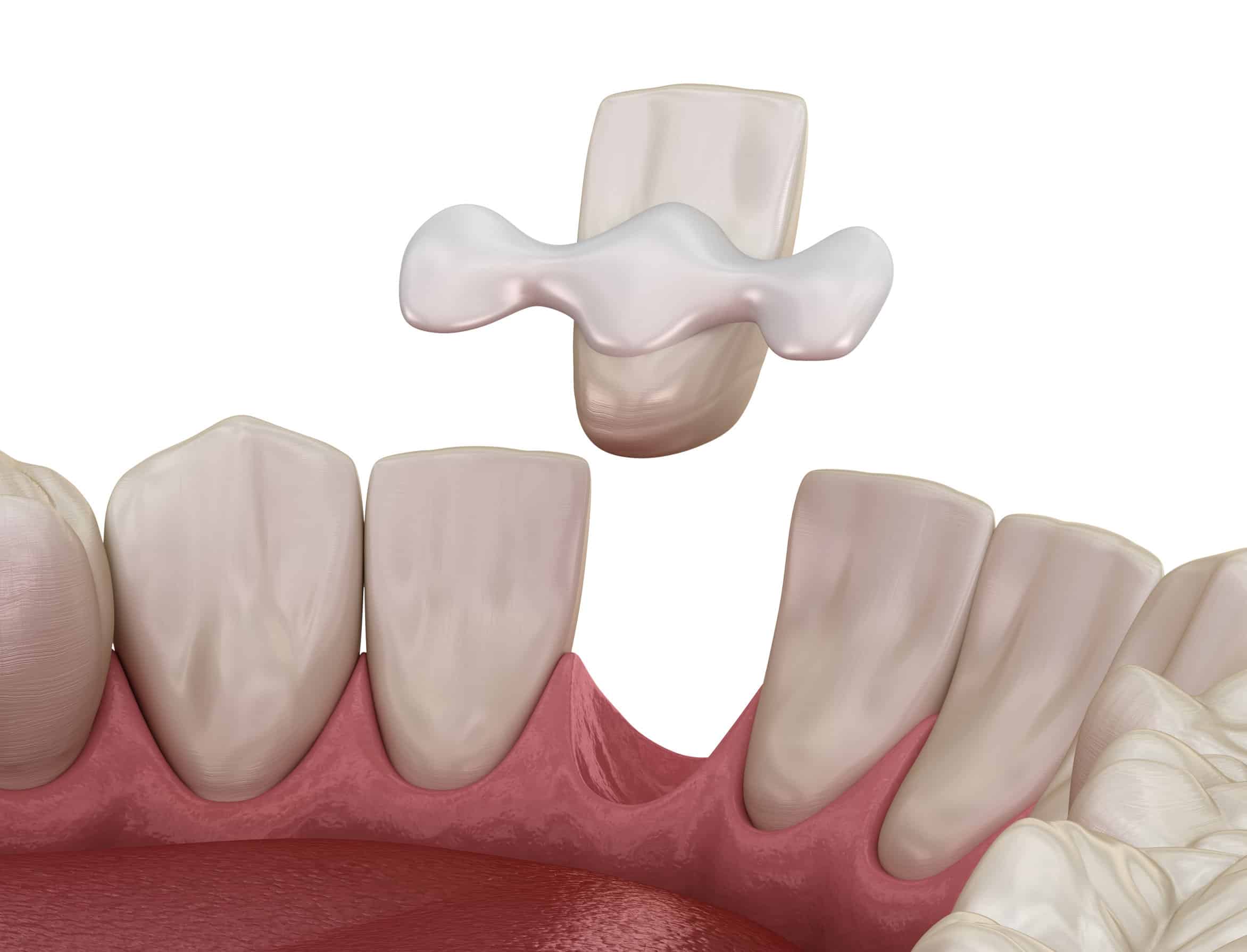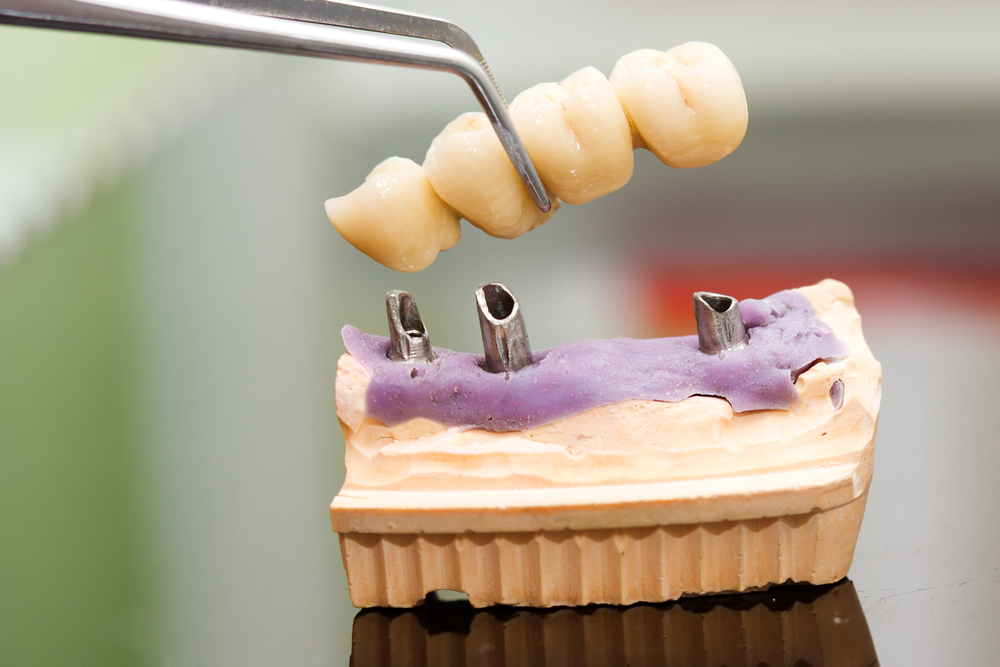Having missing teeth for whatever reason is always unfortunate but it’s also almost always treatable. And one of the best and most common ways to deal with this issue is dental bridges.
What exactly is a dental bridge, however, and how much does a dental bridge cost? We’ll take a look at that as well as other details, bridge types, and more considerations below.
What is a Dental Bridge?
Missing teeth bring a whole host of problems along with them – discomfort, the potential for health problems, appearance issues, changes to the way you bite, and more. A dental bridge doesn’t solve all of these issues as it’s not a tooth implant – more on those below – but a dental bridge still helps with the majority of these problems in a relatively quick and effective way.
In essence, a dental bridge is exactly what it sounds like – a “bridge” between the two teeth that neighbor the missing tooth (or two). That bridge can be made of several different materials but it’s always done in such a way that it replicates the looks, feel, and functionality of a real tooth.
That bridge is always supposed to always be attached to those one or two neighboring teeth, however, and isn’t actually connected to the jaw with “roots” of any kind the way implants or real teeth are. If you want a visual representation, here’s a neat video to help you picture a dental bridge more easily.
This means that when you’re chewing with a dental bridge, the neighboring teeth are still the ones shouldering the pressure of the chewing – the bridge itself is there for cosmetic purposes as well as to prevent the nearby healthy teeth from naturally and gradually moving into the open space left behind the missing tooth.
How Much Does a Dental Bridge Cost?
The cost of dental bridges can vary depending on a lot of factors but it’s almost always lower than the cost of an implant and higher than that of dentures. Effectively, dental bridges are the middle-of-the-road option for dealing with missing teeth in terms of money.
We will go over the various types of dental bridges, materials, options, and variations below but here’s a simple breakdown to give you an idea of the cost of a dental bridge in the US:
- $500 to $1,500 for a traditional bridge, also known as a fixed bridge – the price variation typically comes from the different materials that can be used, the work rates of the dental professional, and so on.
- Up to $2,300 and sometimes more for a bonded bridge, also known as a Maryland bridge. These are more expensive because of the different materials used and because it’s generally better insofar as it doesn’t harm the nearby teeth’s enamel the way a fixed bridge does – more on that below.
- Over $5,000 for implanted-supported bridges. These are essentially the same as fixed bridges but they don’t get attached to real teeth – instead, they are attached to nearby implants that have been used to replace other missing teeth.
Essentially, if you have three missing teeth right next to each other for whatever reason, you can’t place a three-teeth bridge over the nearest two healthy teeth and you potentially may not want to use dentures.
So, an implant-supported bridge will replace one or two of the missing teeth with implants and then draw a bridge between them instead of a third implant. This option is understandably much pricier than the other bridge alternatives because implants themselves are quite costlier.
However, it’s also more affordable than just replacing every missing tooth with a separate implant. Plus, by hanging the bridge over implants and not real teeth, you won’t need to damage the enamel of said real teeth.
Naturally, these sums can be quite hefty for a lot of people, especially if you don’t have a good insurance plan and you need to pay them as out-of-pocket costs. Tooth bridges often aren’t included in the average payment plan, after all, unless we’re talking about actual dental insurance plans.
What’s more, these prices don’t cover things such as aftercare, additional dentist fees for subsequent visits and consultations, and so on. Such prices also don’t fully reflect the longevity of each bridge which also matters.
That’s also why a lot of people resort to “dental tourism” and go to other countries such as Mexico or countries in Eastern Europe where dental services can be done at much lower prices.
So, now that we threw some numbers at you, let’s go over the different types of dental bridges and what makes each of them special to help you figure out if you want to spend $500, $5,000, or more.
Different Materials for Dental Bridges

The first big variation you should be conscious of when choosing a dental bridge is the material it’s made out of. There are quite a few options here but they are best summed up in three categories based on the cost and effectiveness of the materials.
Ceramic, porcelain, and zirconium dental bridges
Zirconium, ceramic, and porcelain bridges alike are excellent choices for dental bridges today. Some people still view them as suboptimal and not good enough because these materials used to not be durable enough for long-term dental bridges.
This isn’t really the case anymore, however, and modern-day dental bridges made entirely of porcelain, ceramic, or zirconium are more than durable enough to last as long as metal bridges and more. That’s also why such bridges are more expensive than their metal counterparts, however – because they last for a very long time while also looking and feeling exactly like real teeth.
It’s even common to use CAD/CAM dental technology to create the perfect custom dental bridges. So, choosing to go with one of these materials does cost extra but it typically saves a lot of problems and additional costs down the road.
Metal dental bridges
The opposite of the above is metal dental bridges. These classic dental bridges are also quite durable and can be perfectly functional. The obvious issue with them, however, is that the shiny metal is very noticeable the moment we smile which a lot of people prefer to avoid.
If we are talking about a tooth that’s further back in the mouth, however, a metal bridge becomes more tolerable as it will be seen less often. And, given that these bridges are much more affordable than ceramic ones, people often choose that option.
PFM dental bridges
PFM – or porcelain fused to metal – dental bridges are the middle ground between the two options above. These bridges are made mostly out of metal but they have a porcelain layer fused on top of it to hide the metal and give the tooth a “natural” appearance.
Because of how they are made, PFM bridges are more affordable than ones made entirely out of porcelain or ceramic but they are still more expensive than metal bridges.
The more noteworthy factor here, however, is that these bridges are not as durable as ones made entirely of porcelain because their porcelain covering can wear out over time and reveal the metal underneath – something that can’t happen with bridges with no metal in them whatsoever.
Different Types of Dental Bridges

Credit: tooth-doctor
The type of bridge we’re talking about matters even more than its materials – both in terms of price and functionality. This is something that makes this tooth replacement option so versatile but it also means you should be extra careful when choosing as some types of bridges can be ill-suited for specific problems than others. Fortunately, as long as you’ve found a good dentist, they should be able to advise you on the best course of action.
Fixed dental bridges
By far the most common and classic type of dental bridge is the fixed bridge. These are the “traditional” bridges we mentioned above that can cost as little as $500 when they are made of metal and are for one tooth only.
The way this bridge works is by placing a “pontic” – i.e. a fake metal or ceramic tooth – in the place of the missing tooth and between your natural teeth. Two such adjacent pontics can be placed too if you have two adjacent missing teeth. Installing three or more pontics next to each other in a fixed bridge isn’t really an option, however, as that’d be too much pressure on the adjacent teeth as they carry the pontics.
That’s because the pontic doesn’t really have “roots” and it doesn’t go inside your gum – it just sits in the air, supported by the other teeth.
Those natural teeth that “carry” the pontics are called abutment teeth. These abutments need to be healthy and strong enough to support the bridge and the dentist may judge that this isn’t a viable option if the abutments aren’t in good enough condition.
Additionally, the pontic is attached to the abutments via crowns that are placed on top of them. For those to be put in place, however, the abutments need to be filed down a bit. This removal of enamel is unfortunately permanent which is one of the drawbacks of fixed bridges.
Cantilever bridges
These bridges are essentially the same as fixed bridges but with only one supporting natural tooth or abutment. For a Cantilever bridge to be successful the abutment must be really healthy and strong.
Bonded dental bridges

Credit: pureholisticdentist
Also called a resin-bonded bridge or a Maryland bridge, this is a more expensive alternative to the fixed bridge because it works without having to file down the enamel of neighboring teeth or even fitting crowns over them. Instead, this bridge is done by balancing the pontic on adjacent teeth via metal or porcelain “wings” that are glued to them with special dental glue.
The wings in question are always placed on the back of the teeth so they aren’t visible to other people and the dental glue or cement is harmless to your teeth and health. The one drawback here – in addition to the higher price – is that even the best dental cement can wear off over time and become loose or break off.
When this happens, the bridge will need to be reapplied which is annoying but it’s not as expensive as making an entire new bridge. Plus, a bonded bridge can still last decades – the glue does wear off that quickly.
Front teeth bridges
These are often cited as a separate category but front teeth bridges are the same as other types – they can be fixed, bonded, cantilevered, and others. It is a good idea not to make them out of metal, however, as they’d be very visible every time you smile.
Implant-supported bridges
The most expensive and best type of dental bridge is the one made using an implant as an abutment rather than a real tooth. That way you won’t need to file down the enamel of your real teeth and you won’t have to worry if your natural abutment tooth is strong enough as the implanted replacement tooth is guaranteed to be good enough to support a bridge.
The obvious drawbacks here are that you’d need surgery for the implant to be installed and you’d need to pay quite a bit of extra. Such a combination of implants and bridges can be a great middle ground between just installing numerous implants or using dentures when you have multiple missing teeth.
In Conclusion
Fixing a missing tooth is usually best done via a dental bridge. Implanting a whole new tooth is better but it’s also much more expensive and it requires surgery and a lot of time. Partial dentures, on the other hand, are much easier and more affordable but they have a number of other issues such as lack of comfort, irritation of the gums, risks of infections, and more.
Still, every situation is different so your dentist will best advise you what the right option is for you and for your budget. Fortunately, dental bridges can be available in a very wide price range and can work for almost anyone’s budget.

